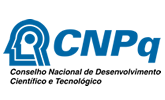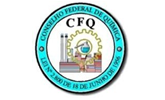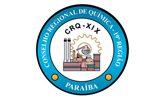DETERMINATION OF THE SPECIFIC MASS OF ORANGE JUICE AS A FUNCTION OF TEMPERATURE THROUGH POLYNOMIAL MODELS
ISBN 978-85-85905-25-5
Área
Alimentos
Autores
Ramos, M.L. (IFTO) ; Silva, F.V.S. (IFTO) ; Pereira, P.V.D. (IFTO) ; Rodrigues, F.M. (IFTO) ; Viroli, S.L.M.V. (IFTO) ; Santos, M.R. (IFTO CAMPUS PARAÍSO DO TOCANTINS) ; Ferreira, L.C. (IFTO CAMPUS PARAÍSO DO TOCANTINS)
Resumo
The objective of this work was to determine the specific mass of orange juice at different temperatures, and to propose a specific polynomial model to predict this property. The specific mass following the method described by AOAC at temperatures of 20°, 30°, 40°, 50 °C, and concentration of 9.8 °Brix. The polynomial model that best adjusted to the experimental data was the polynomial model with four terms. The other two models could also be used, as they presented R2 values> 0,99, also considering a good fit to the experimental data.
Palavras chaves
SPECIFIC MASS; JUICE; TEMPERATURE
Introdução
Brazil is the world's largest producer of orange juice, with 75% of the fruit coming from the state of São Paulo. The juice of this fruit is considered a source of nutrition and health (FERRAREZI, SANTOS and MONTEIRO, 2010). Orange juice is an undiluted beverage obtained from the edible part of orange that has a soluble solids of at least 10,5 ° Brix, a minimum ratio of 7.0, sugars. maximum total of 13,0 g / 100 g and minimum ascorbic acid of 25 mg / 100 g (BRAZIL, 2000). Fresh orange juice is widely consumed due to its pleasant taste and an important source of vitamin C, minerals and carbohydrates. (OLIVEIRA et.al. 2006). Orange juice processing is an economic activity that adds value to the fruit, prevents waste and reduces losses during the marketing of fresh fruit (NASCIMENTO et al., 2013). During the processing of orange juice, heating, pasteurization, concentration and the use of low temperatures are used to preserve the quality of these products. (LIMA, 2003). Mathematical models for predicting specific mass as a function of temperature represent an appropriateness of increasing the efficiency of heat treatments in juice processing and an alternative to replacing the experimental determination of these parameters, which can be very costly for industry (EGEA et al. , 2015). The present work was developed to determine the specific mass of orange juice at different temperatures and to propose a specific polynomial model to predict this property.
Material e métodos
From October to December 2018, oranges were purchased from local businesses in the City of Paraíso do Tocantins. The oranges were packed in thermal boxes and transported to the Food Laboratory of the Tocantins Federal Institute of Education Science and Technology - IFTO Paraíso do Tocantins campus, where they were washed, sanitized, and extracted three (3) liters of juice. The specific mass of the juice was determined at temperatures of 20°, 30°, 40°, 50 °C, at a concentration of 9.8 ° Brix, following the method described by AOAC (2000). The pycnometers were previously calibrated with distilled water at each temperature of the experiment and the temperatures were controlled by the thermostat bath and by the thermometers present in the pycnometers themselves. The specific mass calculation was performed through the equation. ρ = m / v where "ρ" represents the specific mass of the product (kg.m-3); “V” the volume of the pycnometer (m3) and “m” the mass of the product (kg). Regarding the mathematical modeling of the orange juice specific mass, the polynomial models were used, linear ρ = a+bT; quadratic ρ = a+bT+cT²; and third degree ρ = a+bT+cT2+dT3 where “T” is the Temperature (ºC); “a”,“b”, “c” and “d” are coefficients of the equations. The degree of fit of each model was considered by the magnitude of the coefficient of determination (R²). Linear regressions of the specific mass data were made to obtain the equations that represent this magnitude, using a statistical program. All experiments were performed in triplicate and the calculation was used to average the values obtained in the experiments. The orange juice data were analyzed using the Sisvar computational statistical program.
Resultado e discussão
Table 1 shows the experimental values of the specific mass of the juice at
temperatures of 20°, 30°, 40° and 50ºC.According to Table 01, the average
values of the specific mass obtained for orange juice tended to decrease
with
increasing temperature. Guedes et al. (2010), studying the specific mass of
watermelon pulp, observed that the specific mass is directly proportional to
concentration and inversely to temperature. Ramos and Ibarz (1998)
determining
experimental values for density at different concentrations and temperatures
obtained specific mass values for orange juice, ranging from 1055,19
kg.m-3 to 20 ºC and 1046,04 kg.m-3 to 50 °C, at a
concentration of 10 °Brix, which values are higher than those obtained in
this
work because the concentration, analyzed by them, is higher than the
concentration of the juice used in this work (9.8 ºbrix). Alves et al (2016)
found specific mass values for orange juice, ranging from 1032,43
kg.m-3 at 30 ° C to 1024,29 kg.m-3 to 50°C, at a
concentration of 9,5 °Brix, which values are smaller than those obtained in
this work because the concentration, analyzed by them, is lower than the
concentration of the juice used in this work (9,8 ºbrix). Table 2 shows two
polynomial equations that were used to describe the effect of temperature on
the variation of orange juice density and its respective determination
coefficients.The model that best fit the experimental data was the four-term
polynomial model, since the determination coefficient (R2) was 1.
Dantas Junior et al. (2007), elaborating models for specific mass
prediction,
observed that the model that best fit the experimental data was the four-
term
polynomial model, with R2= 0.9979.


Conclusões
The specific mass of orange juice ranged from 1054,36 to 1045,81 kg.m-3 and, with temperatures from 20 to 50 ºC, with a significant reduction in pulp specific mass. In relation to the temperatures studied in this work. The polynomial model that best fit the experimental data was the four-term polynomial model, as it presented the highest determination coefficient R2 = 1. The other two models could also be used, as they presented R2 values> 0.99, also considering a good fit to the experimental data.
Agradecimentos
A Deus Aos Professores Fernando Morais Rodrigues, Paulo Vitoriano Dantas Pereira e Sergio Luis Melo Viroli
Referências
ALVES, M.N.M. ; SANTOS, D.A.; MELO, J.C.S.; COSTA, C.H.C. ; Feitosa, R.M. Efeito da temperatura na massa específica do suco da laranja. In: Congresso Brasileiro de Química - CBQ, 2016, Belém. Congresso Brasileiro de Química - CBQ, 2016.
ALVES, M.N.M. ; SANTOS, D.A. ; MELO, J.C.S. ; COSTA, C.H.C. ; BADARO, A.D.S. AVALIAÇÃO DE MODELOS POLINOMIAIS PARA ESTIMAR A MASSA ESPECÍFICA DA POLPA DE GOIABA. In: Congresso Brasileiro de Química - CBQ, 2017, Gramado RS. Congresso Brasileiro de Química - CBQ, 2017.
AOAC: ASSOCIATION OF OFFICIAL ANALYTICAL CHEMISTS. OFFICIAL METHODS OF ANALYSIS OF AOAC INTERNATIONAL. 17th etd., AOAC International, Arlington, 2000.
BRASIL. MAPA. Instrução Normativa nº 01, de 07/01/2000. Diário Oficial, Brasilia, DF, 2000
DANTAS JÚNIOR, E. E.; QUEIROZ, A. J. M.; FIGUEIREDO, R. M. F. Determinação e elaboração de modelos de predição da massa específica da manga espada. Revista Educação Agrícola Superior, v.22, n.1,p.39-42, 2007.
EGEA, M. B.; REIS, M. H. M.; DANESI, E. D. G. Aplicação de modelos matemáticos preditivos para o cálculo das propriedades termofísicas do palmito pupunha. Revista Brasileira de Produtos Agroindustriais, v.17, n.2, p.179-187, 2015.
FERRAREZI, A. C.; SANTOS, K. O. dos. MONTEIRO, M. Avaliação crítica da legislação brasileira de sucos de fruta, com ênfase no suco de fruta pronto para beber. Rev. Nutr., Campinas, 23(4): 674; 676 jul./ago., 2010.
GUEDES, D. B.; RAMOS, A. M.; DINIZ, M. D. M. S. Efeito da temperatura e da concentração nas propriedades físicas da polpa de melancia. Brazilian Journal Food Technology, v. 13, n. 4, p. 279-285, 2010.
LIMA, Í. J. E. D.; QUEIROZ, A. J. D. M.; FIGUEIRÊDO, R. M. F. D.Propriedades termofísicas da polpa de umbu. Revista Brasileira de Produtos Agroindustriais, Campina Grande, Especial, n.1, p.31-42, 2003
NASCIMENTO, J.M.C.; MOURA, M.F.V.; FONSECA, P.A.Q.; CRUZ, A.M.F.; SOARES, J.C. Determinação do Teor de Ácido Ascórbico pelo Método de Tillmans em Polpas de Frutas. CBQ 53º Congresso Brasileiro De Química, Rio de Janeiro
OLIVEIRA J. C.; SETTI-PERDIGÃO P.; SIQUEIRA K. A. G.; SANTOS A. C.; MIGUEL M. A. L. Características microbiológicas do suco de laranja in natura. Instituto de Ciências Biomédicas, Departamento de Farmacologia Básica e Clínica da Universidade Federal do Rio de Janeiro. 2006.
RAMOS, A. M.; IBARZ, A. Density of juice and fruit puree as a function of soluble solids content and temperature. Oxford, v. 35, n. 1, p. 57-63, 1998.









